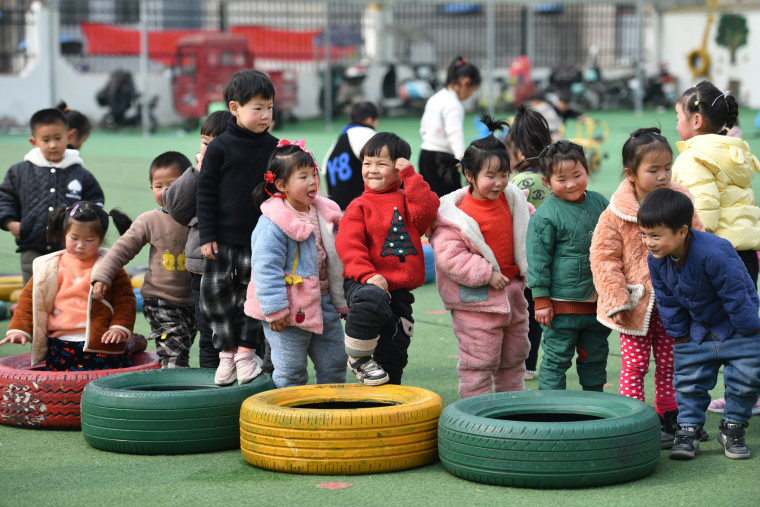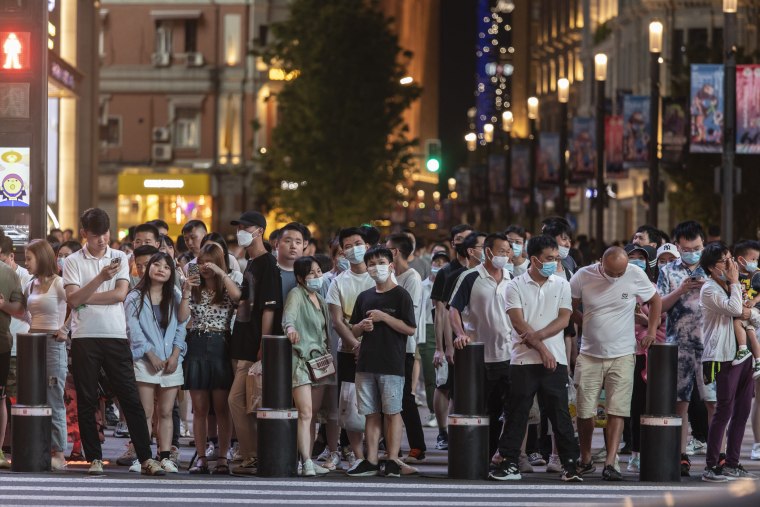China’s population drops for a second year despite government push for more
HONG KONG — China’s population declined last year for the second year in a row, officials said Wednesday, spurred by record-low births and a wave of Covid-19 deaths that have deepened demographic worries in the world’s second-largest economy.
The total population of mainland China was 1.409 billion at the end of last year, the National Statistics Bureau said, down more than 2 million from 2022. That compares with a decline of 850,000 from 2021 to 2022, China’s first population decline in six decades.
There were around 9 million newborns last year — a birthrate of 6.39 per thousand — more than half a million fewer than the previous year and the lowest since the founding of the People’s Republic of China in 1949.
It was the second year in a row that China recorded fewer than 10 million births, with young people citing lack of work-life balance, the high cost of living and the persistence of traditional gender roles as reasons for their reluctance to have families.
Officials said there were more than 11 million deaths, the most since 1974, when China was in the throes of the Cultural Revolution. A U.S. study found last year that China had almost 2 million excess deaths in early 2023 after officials abruptly lifted three years of “zero-Covid” restrictions, unleashing the coronavirus on a population that had barely been exposed to it.
China’s declining and aging population — last year it was overtaken by India as the world’s most populous country — has raised questions about whether it can overtake the U.S. as the world’s largest economy.
Officials said Wednesday the economy grew 5.2% last year, in line with the government’s goal for the year but below the growth rate before the pandemic.
“The situation of the national economy is picking up and improving,” Kang Yi, the director of the National Bureau of Statistics, said at a news conference in Beijing, adding that economic development will continue to face challenges amid the growing complexity and uncertainty of the global environment.
Raising the birthrate has been a top priority for the government, which in recent years has eased strict family planning policies that restricted most couples to only one child from the late 1970s until 2015 to prevent the population from growing too quickly. Couples are now allowed to have up to three children.
President Xi Jinping said last year that China needed to “actively cultivate a new culture of marriage and childbearing” and that women had a critical role to play in establishing a “new trend of family.”
Local governments have responded by introducing tax breaks, child care subsidies and other incentives to have children, in some cases even making it easier for women to have children without being married, long a cultural taboo. In the central city of Wuhan, a statue of a family of three was altered late last year to add two more children, state media reported.

The response from the public has been less than enthusiastic. According to the statistics bureau, the number of newborns peaked in 2016 at 17.86 million and has declined every year since then. Marriage rates are also at a historic low.
Young Chinese cite the stress of life as one of the main reasons they are hesitant to have children, many of them having grown up as only children who are now solely responsible for their aging parents.
“Why do we have to give birth to babies?” read a comment this month on Weibo, a popular Chinese social media platform. “In the face of so much stress, we still need to take care of the elderly and babies. But without babies, the pressure would be halved.”
They also have economic concerns, as the millions of graduates leaving universities each year struggle to find jobs that match their skills.
Chinese officials on Wednesday resumed sharing the unemployment rate for people ages 16 to 24, saying it was 14.9% in December, not including those who are in school. Officials had stopped sharing the data last summer as youth unemployment hit record highs of more than 20%, citing the need to reassess calculation methods.

The falling birthrate has deepened experts’ concerns about China’s aging population and the labor shortages that could result, with some calling for raising the retirement age to expand the workforce.
In 2023, the proportion of people over 65 in China was 15.4%, official data showed, meeting the United Nations’ definition of an “aged society.” (In the U.S., that figure was about 17.3% in 2022.)
On Monday, China’s State Council announced plans to strengthen the country’s “silver economy,”…
Read More: China’s population drops for a second year despite government push for more

